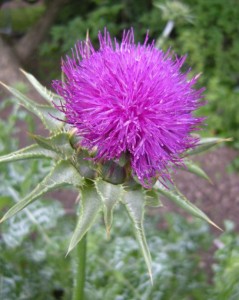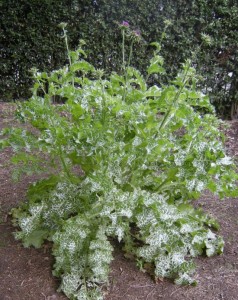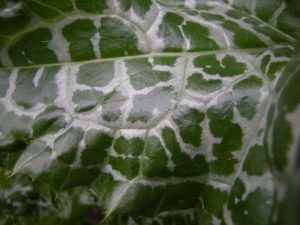A botanic garden holds a unique collection of plants. These are given individual accession numbers of eight digits: the first four refer to the year of introduction the second four are sequential for the number of introductions in that year. Individual numbers recording data from plant collecting trips across the globe, donation information, images and verification notes. There are occasions where a self-sown seedling springs up and merits attention but not accession.
Tucked away to grow in peace behind metal barriers at the access gate on the west boundary is an interesting biennial, Silybum marianum. This, the best specimen I have seen growing in the Garden, is a reclusive escape from previous introductions to the Garden.
The species is native to the warmer climes of the Mediterranean, south-west Europe and into Afghanistan.
Silybum marianum is a composite milk thistle that produces and sets multitudes of viable seed after the large, purple flower heads fade. These are protected, like the leaf edges, with sharp spines, defying any predator to use this plant as fodder.
The real beauty is in the marbling on the leaf. White and silver streaks and flecks coalesce and contrast with the mid green pigments that bind the foliage together.
This truly magnificent specimen spreads and towers to 1.6m. It’s just disappointing to realise that it will die back and compost into the ground as flowering and seed production guarantee the next generation.



